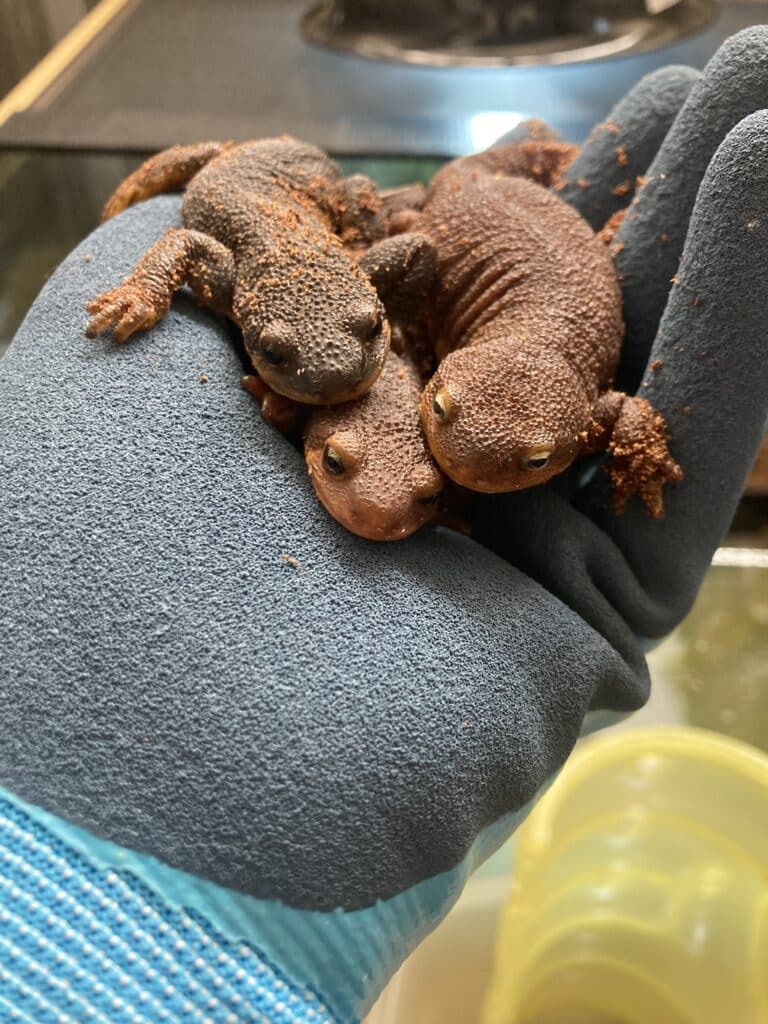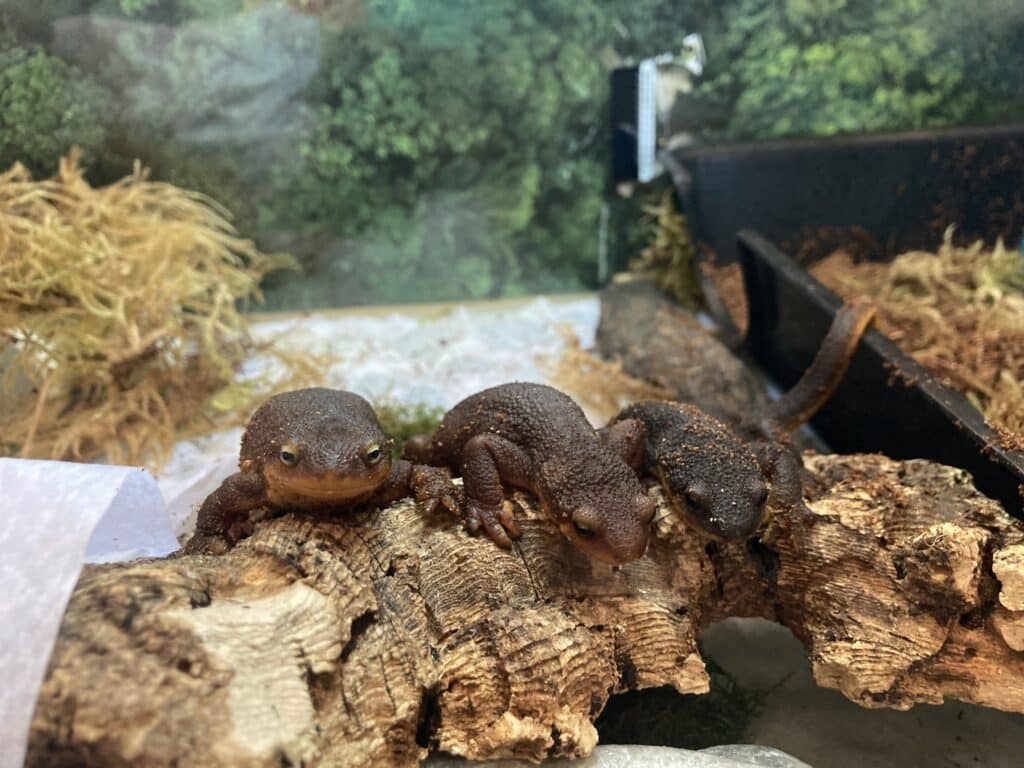Blog
Look Who’s Newt to the Wildlife Team
By Monika Mukerji
In May, we welcomed three new California newts to CuriOdyssey! Their names are Fern, Moss, and Mallow, and they are each approximately 6 years old.
I learned all about our new newts from Nikii Finch-Morales, Director of Wildlife, and Kendra Jabin, Vet Tech, and I am excited to share some of my new(t) knowledge with you!

Newts have a few interesting adaptations that help them survive! California newts are quiet creatures. Their bright-colored skin indicates a warning that they are toxic amphibians. Their skin itself has a toxic poison called tetrodotoxin. Their infectious skin scares any predators and guarantees that the newt will survive. Newts like to stay in the dark. This is because they have adapted to hiding from predators frequently, as they are slower on land than in water. CuriOdyssey provides a UV light to ensure that they are getting some brightness for the visitors to see. For newts to survive, they need to be near shallow water or moist grass because if they are near dry areas, dehydration will affect their health detrimentally. Newts are not allergic to anything in particular but can easily catch chytrid fungus, which is infectious only to them and some other amphibians (for example, poison dart frogs, Sierra newts, and fire salamanders).
It is important to us that we take care of our newts properly. Some of their essential needs include food, water, and moist soil. We also like to hang a UV light that provides important vitamins for the newts. Daily, we need to ensure the dechlorinated water is cleaned for the newts. Newts need to be in dechlorinated water in order to absorb oxygen in the water that comes into contact with their skin. During the day, they hide out, which can be challenging to see in the exhibits. However, they are used to hiding from predators when they were in the wild. We like to keep the newts engaged, even though they aren’t active amphibians, so we make small adjustments to their “furniture”, such as plants, logs, or rocks, to give them new things to explore. A newt’s daily routine is consistently eating, reproducing, and surviving.

A fun fact that you may not know about newts is that as they get older, the color of their skin changes. Their skin physically changes from rough to smooth. They also get more aquatic.
Newts are fascinating amphibians. We hope you get a chance to see them in person at Curiodyssey!
Monika Mukerji (she/her) is an intern at CuriOdyssey. Her role includes observing campers’ behaviors, creating blog posts, and helping around.
Join the CuriOdyssey Community
LOCATION
1651 Coyote Point Drive
San Mateo, CA 94401
Ohlone Land Acknowledgement
650-342-7755
info@curiodyssey.org
CuriOdyssey is a 501(c)(3) non-profit, Tax ID 94-1262434




